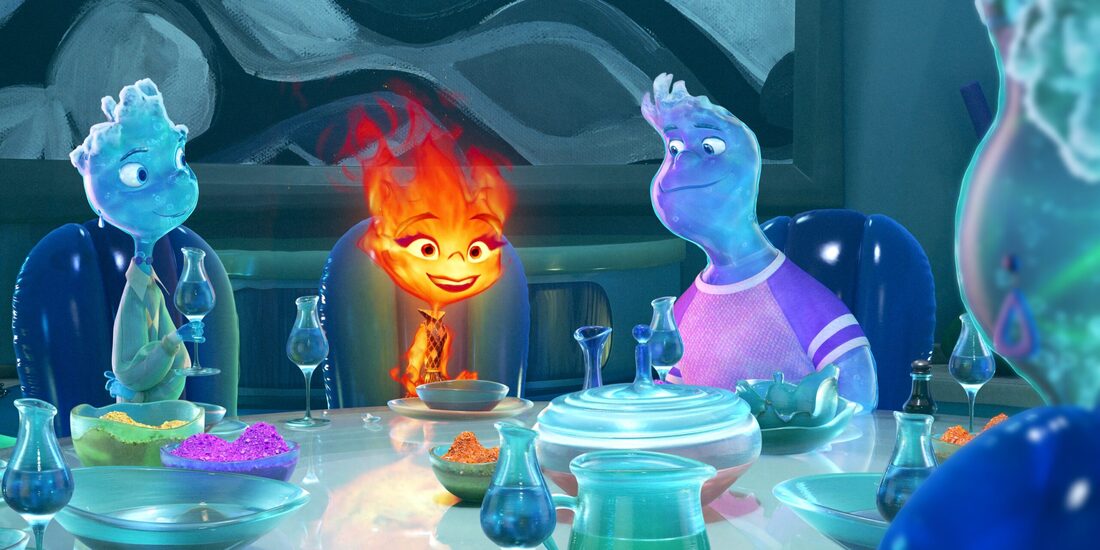|
PG and it's for one example of cursing? If I had to throw a bunch of things around saying why an animated film is PG instead of G, mostly it is because "G" almost doesn't exist as a rating. The movie is fundamentally about instituionalized racism and the place of the immigrant in society. But not much happens that would be considered all that controversial. Still, PG.
DIRECTOR: Peter Sohn I have too much writing to do and no time to do it. I know. These are problems that everyone has, but I'm a guy who really likes having To-Do Lists checked off properly. I always thought that Elemental wasn't going to be that great. It kind of fell under the radar. What few things I heard from the movie were "meh." I don't think that colored by viewing of the movie, but I honestly thought that Elemental was a return to form for Pixar. Sure, it covers a lot of the beats that Zootopia also covered. But this is Pixar's Guess Who's Coming to Dinner and I don't hate that at all. Here's the thing that you have to understand before we talk further. (After all, this is a dialogue! Didn't you know?) I didn't think that Zootopia was all that subtle. But it was subtle enough to go over my students' heads when I mention that Zootopia was Black Lives Matter for Disney. If you fundamentally needed to understand perspectives in racial interaction, Zootopia is a fabulous starting point. But Zootopia, for all the allegory that is throughout the film, goes harder than Elemental. It really goes for the jugular in the best way possible. Elemental, instead, goes more obvious. But on the other hand, it isn't as damning as Zootopia is. I could probably argue that Zootopia is Antiracist while Elemental talks about race, but doesn't really condemn a certain group of people. I'm about to really get down and dirty with it, so please bear with me. I think that Elemental is ultimately an incredibly healthy movie for kids to be exposed to because Wade lives in a world mentally where race is so not an issue that the disparity between cultures doesn't even enter his consciousness. That's cool...up to a point. Again, if this is an intro to discussion about race and culture with children, Elemental nails it. Wade, who seems to be coded as White America (despite being voiced by a Black man), is so open to his attraction to Ember that the only thing that stops him from going all in is the fear of hurting her. That's not a bad place to be. Similarly, the Guess Who's Coming to Dinner scene is often colored more by misunderstanding than it is outright racism. There are slip ups, but ultimately, people aren't hiding deep-seeded racial phobias so much as stepping out of comfort zones. Cool. But this also means that Wade can also be written as a color-blind character. He's the heroic character in the story, but he's also not the protagonist. Ember is the protagonist. We view the problems of the story through Ember's eyes. Wade is on board from moment one. He's a bit written as a dope, which is sweet because it gives him singular vision. He knows that he loves Ember and will do anything to ensure that the relationship will thrive.
0 Comments
Leave a Reply. |
Film is great. It can challenge us. It can entertain us. It can puzzle us. It can awaken us.
AuthorMr. H has watched an upsetting amount of movies. They bring him a level of joy that few things have achieved. Archives
July 2024
Categories |

 RSS Feed
RSS Feed